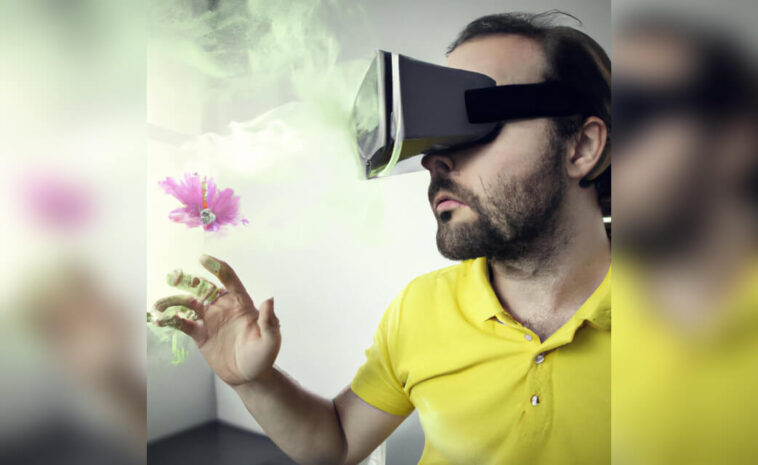Virtual reality Smell has made incredible progress in engrossing users’ hearing and seeing senses with immersive experiences. But one significant sense that has been mostly disregarded up until lately is smell. The immersion and realism of virtual encounters could be substantially improved with the addition of fragrances to virtual settings. We shall examine the developing topic of virtual reality scent and the enabling technology in this post.
1. Understanding Olfactory Perception:
It is crucial to appreciate how olfactory perception works in order to comprehend how virtual reality scent functions. Through a combination of chemical receptors in the nose and the brain’s processing mechanisms, our olfactory system detects and interprets odors. Each smell is made up of a special combination of odorant molecules that causes our brains to react in a certain way, which we interpret as a different fragrance.
2. Challenges and Opportunities for Virtual reality Smell:
Adding fragrance to virtual reality presents a number of difficulties. First off, precisely reproducing complex scents is a difficult undertaking. Odors are challenging to digitize and reproduce, unlike visual and auditory data, which can be preserved as digital files. For a consistent and immersive setting, however it is also essential to make sure that the fragrances are timed with the virtual experience.
The advantages of virtual reality scent, however, are substantial. Since smell and memory are closely related, it enhances our emotional connections and sensation of presence in virtual settings. Virtual reality (VR) can offer a multi-sensory experience that feels remarkably authentic and compelling by utilizing olfactory technologies.
3. Olfactory Technology:
Ingenious technologies are being created to incorporate smell into virtual reality, including:
- fragrance synthesis is the process of making synthetic odors by combining different fundamental fragrance molecules. It is possible to replicate a broad variety of smells by carefully combining these molecules, from synthetic or futuristic aromas to natural scents like those of flowers and forests.
- Olfactory Dispersion: Smells are sent to the user’s nose through olfactory dispersion devices. These gadgets can come in a variety of shapes, such tiny cartridges or integrated systems in VR headsets. They enhance the user’s sensory experience and immersion by releasing particular smells at the right intervals.
- Scent Recognition: Scent Recognition technology seeks to digitize and collect real-world odors. This procedure entails mapping odors to their matching digital representations after analyzing their chemical makeup. Such technology makes it possible to reproduce particular scents in virtual settings.
4. Applications of Virtual Reality Smell:
The integration of smell in virtual reality opens up a wide range of applications:
- Playing video games with the ability to smell the surroundings would bring a new level of immersion and realism. Virtual reality fragrance can convey players to new depths of sensory experiences, from exploring ancient forests to exploring futuristic cities.
- Training and Simulation: Virtual reality scent can be used to produce more lifelike training simulations in fields like aviation, the military, and medical. The effectiveness of training can be increased and a safer, more immersive learning experience can be provided by simulating the scent of jet fuel, combat situations, or hospital environments.
- Virtual Tourism: The ability to smell in virtual reality could completely change the way we travel virtually. Users can have a more authentic and immersive virtual tourism experience, explore foreign locales, and feel as though they are truly there, by recording the scents of various sites across the world.
Conclusion:
Virtual reality scent has the power to completely transform how we interact with virtual surroundings. We can make VR experiences that are more immersive, emotionally resonant, and realistic by integrating fragrance. We can anticipate virtual reality smell to become a crucial component of our upcoming digital experiences, enhancing them as olfactory technology advances.
Keep up with the latest news updates and trending topics at info Junkster. For Technologies related hot topics please click here.





